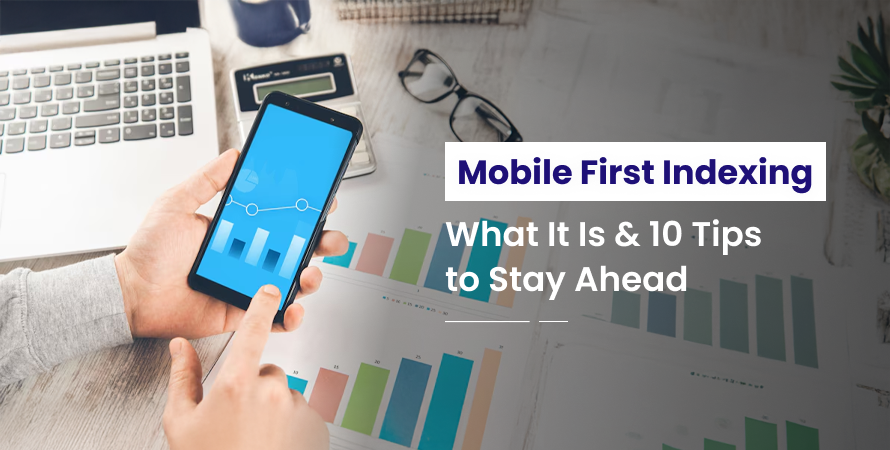Mobile-First Indexing: What It Is & 10 Tips to Stay Ahead



Introduction
The way people use the internet has drastically changed over the past decade. As of 2025, the majority of online searches happen on mobile devices. This behavioral shift has forced Google to evolve its indexing methods, giving rise to Mobile-First Indexing. For businesses, SEO professionals, digital marketing agencies, and white label SEO providers, understanding and adapting to this new standard is not optional—it’s essential.
In this guide, we’ll break down what Mobile-First Indexing is, why it matters, and the 10 best practices you can implement to stay competitive.
What Is Mobile-First Indexing?
Mobile-First Indexing means that Google predominantly uses the mobile version of a website for indexing and ranking. Previously, Google used the desktop version to evaluate content. But as mobile usage surged, the search engine adjusted its approach to better reflect real user behavior.
If your mobile site has less content, slower performance, or a confusing layout compared to your desktop version, your rankings could be at risk. Googlebot now primarily crawls the mobile version of your site, and that version determines how well you rank in search results.
In essence, the mobile version of your website is now your primary version in Google’s eyes.
Why Mobile-First Indexing Matters in 2025
Mobile-first indexing isn’t just a technical tweak—it reflects a broader shift in user expectations and digital behavior.
- Mobile search dominates: Over 70% of global web traffic comes from mobile devices. Failing to prioritize mobile performance is failing your largest audience.
- Google rewards mobile usability: Speed, responsiveness, and user experience on mobile all directly influence your SEO rankings.
- Alignment with E-E-A-T: Google’s Experience, Expertise, Authoritativeness, and Trustworthiness framework also considers how accessible and usable your site is on all devices.
- Impact on SEO and conversions: Poor mobile performance doesn’t just hurt visibility; it affects engagement, bounce rates, and conversions.
For digital marketing agencies and white label SEO service providers, understanding these implications is key to delivering results that reflect the modern web landscape.
Common Myths About Mobile-First Indexing
Myth 1: Desktop content still matters more
False. If something is only available on the desktop version, it might be completely ignored by Google.
Myth 2: I need a separate mobile site
Not necessarily. In fact, responsive design is the preferred method because it ensures consistency across devices.
Myth 3: Mobile-first means mobile-only
No. Desktop still matters—but Google evaluates your site starting with the mobile experience.
Myth 4: Responsive sites are automatically optimized
Responsive design is a good start, but if your mobile version is slow, hard to navigate, or hides important content, you’ll still suffer.
How Mobile-First Indexing Affects SEO
Mobile-first indexing touches nearly every part of mobile SEO optimization:
- On-Page SEO: Headers, meta tags, alt attributes, and keyword placement need to be consistent and accessible across both versions.
- Technical SEO: Structured data, canonical tags, sitemaps, and robots.txt files must be mobile-friendly and error-free.
- Content Strategy: If content is removed or hidden on mobile for design reasons, it won’t be indexed.
- Link Equity: Ensure that links are crawlable and that internal linking works equally well on mobile.
- Local SEO: Mobile-first has elevated the importance of local listings, map packs, and on-the-go accessibility.
10 Expert Tips to Stay Ahead with Mobile-First Indexing
1. Use Responsive Design
Responsive web design allows your site to adapt to various screen sizes while maintaining functionality and design consistency. This eliminates the need for multiple URLs and ensures content parity.
Avoid dynamic serving or separate mobile URLs unless absolutely necessary.
Test responsiveness using Google’s Mobile-Friendly Test tool.
2. Prioritize Core Web Vitals on Mobile
Google’s Core Web Vitals—LCP (Largest Contentful Paint), FID (First Input Delay), and CLS (Cumulative Layout Shift)—are crucial metrics for mobile search optimization performance.
- Optimize image loading
- Reduce JavaScript bloat
- Minimize layout shifts
Focusing on these metrics improves rankings and user experience alike.
3. Ensure Full Content Parity
Make sure all key content is visible on mobile. If you’re hiding text, images, videos, or links for design purposes, Google may not index them.
- Match mobile and desktop versions closely
- Include metadata and alt text on all elements
- Avoid expandable or accordion content for key information
4. Improve Mobile Page Speed
Mobile users expect fast load times. Google expects pages to load within 2.5 seconds or less for a good LCP score.
- Use lazy loading for images and videos
- Enable file compression (GZIP, Brotli)
- Serve scaled images and modern formats (e.g., WebP)
Page speed is a direct ranking factor and has a major impact on bounce rates.
5. Use Mobile-Friendly Navigation
Menus and navigation elements should be designed for thumbs—not cursors.
- Stick to simple menu structures
- Avoid hover-based dropdowns
- Make buttons large and well-spaced
Good navigation encourages deeper engagement and lower bounce rates.
6. Optimize for Structured Data on Mobile
Structured data (schema markup) helps search engines understand your content. It must be consistent across desktop and mobile.
- Avoid mobile-specific rendering issues
- Ensure all schema elements are accessible on mobile
- Use Google’s Rich Results Test regularly
Schema can significantly improve visibility via rich snippets.
7. Fix Mobile-Only Technical SEO Issues
Issues such as incorrect canonical tags, blocked assets, or improper redirects often emerge only on mobile.
- Test all mobile URLs in Google Search Console
- Use the Mobile Usability report to fix errors
- Avoid intrusive interstitials that hinder mobile access
Clean technical mobile-friendly SEO is foundational to effective indexing.
8. Monitor Mobile Performance in Search Console
Google Search Console is your best tool for tracking how your mobile pages are being indexed.
- Use the “Mobile Usability” report
- Check crawl stats and mobile coverage reports
- Use the URL Inspection Tool to compare indexing between desktop and mobile
Regular monitoring can catch issues before they harm rankings.
9. Create Content Optimized for Mobile Users
Content should be tailored for mobile consumption.
- Use short paragraphs and clear headings
- Break up content with images, lists, and whitespace
- Use a readable font size (at least 16px)
A mobile user should be able to scan your content quickly without friction.
10. Leverage White Label Technical SEO Support
If you’re a digital marketing agency managing multiple clients, keeping up with mobile-first indexing on Google for every site can be overwhelming.
White label SEO services provide scalable support for:
- Mobile audits
- Technical fixes
- Performance monitoring
- Reporting
This allows you to focus on mobile SEO strategy and growth while ensuring every client site is mobile-optimized.
The Role of Digital Marketing Agencies in SEO for Mobile Websites
Digital marketing agencies are often the first line of defense when a business struggles with mobile SEO rankings. Your role includes:
- Educating clients on mobile-first indexing
- Performing in-depth mobile audits
- Developing mobile-first content strategies
- Implementing technical SEO improvements
To stay competitive, agencies must prioritize mobile usability as a core component of all SEO campaigns.
How White Label Agencies Can Lead the Way
White label SEO providers allow digital agencies to offer expert-level mobile optimization without building in-house teams.
They help with:
- Mobile-first website audits
- Implementing responsive design
- Fixing performance issues across devices
- Creating detailed white label reports for client delivery
By partnering with a white label agency, you can offer mobile-first expertise at scale, increasing client retention and satisfaction.
Mobile-First Content Optimization Strategies
Mobile-first content is not just a layout change—it’s a user intent shift.
- Write for scanning: Use subheadings, bullet points, and visual breaks.
- Design for action: Use clear calls-to-action (CTAs) above the fold.
- Use mobile-scaled visuals: Optimize images for fast loading and responsive viewing.
- Avoid pop-ups: Intrusive interstitials can lead to penalties under Google’s mobile usability guidelines.
- Streamline forms: Fewer fields, larger buttons, and autofill features improve mobile conversion rates.
These content principles also support Google’s E-E-A-T guidelines by improving user engagement and clarity.
Future Trends in SEO for Mobile Phones & Google’s Algorithm
Looking ahead, mobile Search Engine Optimization will continue to evolve:
- Voice search optimization: More users are using mobile voice assistants. Natural language content will win.
- Visual search: Tools like Google Lens are becoming more common, requiring image SEO and structured data.
- Progressive Web Apps (PWAs): These hybrid mobile experiences are gaining traction for their app-like performance.
- AI and personalization: Mobile search results are becoming more tailored to the user’s device, location, and habits.
- 5G and mobile-first design frameworks: Speed and mobile-first design will drive innovation in site architecture.
Adapting to these trends now can keep your strategic Search Engine Optimization for Mobile future-proof.
Conclusion
Mobile-First Indexing is not a passing trend—it’s the new standard. Websites that are not fully optimized for mobile users will fall behind in visibility, engagement, and conversions.
Digital marketing agencies and white label SEO service providers must integrate mobile-first best practices into their core offerings. With the right approach, businesses can turn Google’s mobile-first shift into a competitive advantage.
Stay ahead by prioritizing responsive design, optimizing content and technical SEO for mobile sites, and leveraging expert partnerships where needed. In a mobile-dominated world, your SEO strategy must meet users where they are—on their phones.
Frequently Asked Questions (FAQs)
Use Google Search Console. If your site has been switched to mobile-first indexing, you’ll see a notification in the messages section and mobile crawlers listed in crawl stats.
No. A responsive design is preferred by Google. It maintains a single URL and consistent content across devices.
Yes. Since Google primarily indexes the mobile version, poor mobile performance can impact rankings across all devices.
Everything. Your mobile site should have the same content, structured data, metadata, and navigation as the desktop version.
Yes. They can handle technical audits, performance fixes, and monitoring across multiple websites—ideal for agencies managing many clients.